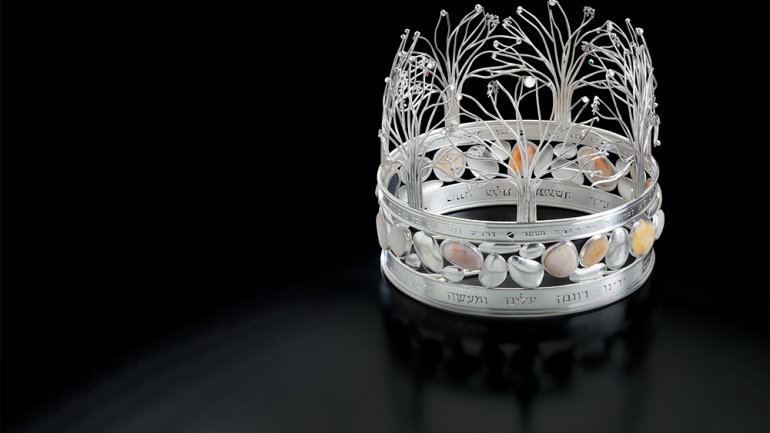Articles of Faith
Articles of Faith
Anika Smulovitz brings a scholar’s eye to Judaica.
Anika Smulovitz makes exquisite, delicately fabricated works of Judaica, the ritual objects used for holy days, worship, and other Jewish observances. So it may come as a surprise that the metal artist doesn’t consider herself especially devout – she grew up in laid-back Eugene, Oregon, in a progressive Jewish community that valued egalitarianism and the environment over ritual observance. But in her senior year of college, the death of her beloved childhood rabbi inspired her to create a mourner’s pendant. On the back of the pendant, she inscribed Psalm 23:4: “Even though I walk through the valley of the shadow of death, I shall fear no evil for you are with me.” Since then, Smulovitz, an art metals professor at Boise State University, has returned again and again to Judaica. These objects, she says, “hold the essence of Jewish life and culture,” and she is drawn to their power, symbolism, and history.
Some of her works, like the pendant, which she considers a kind of amulet, are not religious objects at all, but have folkloric or traditional roots. Others do serve a religious purpose, but because the form of most Judaica is not governed by halacha, or Jewish law, Smulovitz has plenty of creative freedom.
She finds the Torah pointer, or yad (literally, “hand”), a particularly fascinating format, one that can be used to investigate any theme. When Jews chant from the Torah at synagogue, they use a yad, often shaped in the form of a hand with a pointed index figure, to follow the words in the text and to protect the fragile parchment. Many of Smulovitz’s yads allude to the natural world. Others are fashioned to look like scientific instruments – such as a telescope or magnifier – to help readers seek out, if only symbolically, the mysteries of their faith.
Nature is key to Smulovitz, but the scholar in her is always present. “I’ve got a lot of books,” she says with a laugh. “That’s usually where I start my Judaica. There’s a wealth of visual cultural history that exists in Judaism.” In researching spice boxes, for example, which are used during the havdalah ritual to mark the end of the Sabbath, she discovered that the oldest reference to the tradition speaks of smelling a branch of myrtle, and her Myrtle Hadas spice box pays homage to that detail.
When her Boise rabbi, Daniel Fink, commissioned her most ambitious work of Judaica to date, the Oak River Torah crown, Smulovitz once again turned to her books. (A Torah crown, or keter Torah, is used to decorate the two wooden dowels around which the Torah parchment is scrolled.) She discovered that crowns were often embellished with architectural motifs related to the location of the synagogue. To express that sense of place yet preserve her focus on nature, Smulovitz incorporated river rocks into Oak River – “one is from Boise, and the rest are from the rabbi’s hometown,” she says; Fink, a 12th-generation rabbi, often walked creekside in the woods behind his childhood home in Virginia with his father. The seven oak trees that circle the top of the keter Torah refer to those woods – and to the Torah itself, which is often referred to as the Tree of Life. Oak River speaks of nature, history, and symbolism all at once.
Torah crowns, like all Judaica, are taken out regularly and used – and passed down through the generations. “That’s why I keep coming back to making Judaica,” Smulovitz says. “When an object is handled and used, it has the potential to pose questions or bring things to light or honor what needs to be honored.”
Does that mean she’s not finished exploring Judaica? “I don’t think I ever will be,” she says.
Laura Silver is a writer and editor in Minneapolis.




